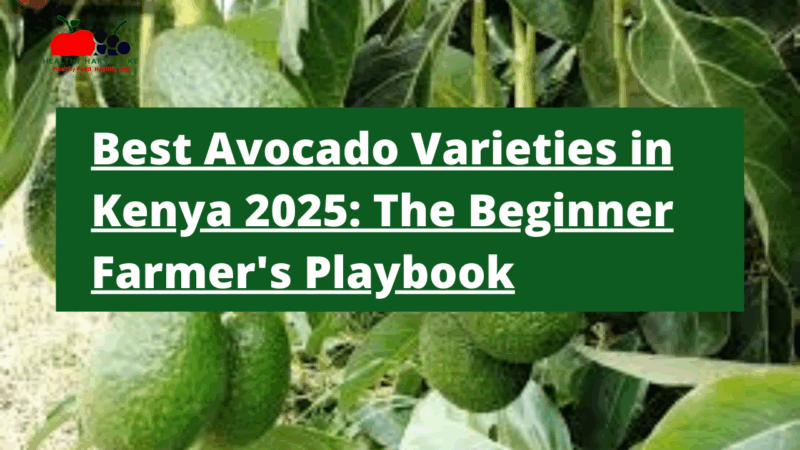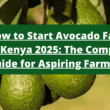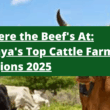The Green Gold Rush: Why Avocados Are Kenya’s Next Big Thing
Let’s cut straight to it – if you’re thinking about jumping into farming in Kenya, avocados should be at the top of your list. Not just any crop, these green gems have pushed Kenya into Africa’s #1 avocado producer spot and among the top 10 global exporters. According to KALRO, we’re talking about a Ksh 10 billion export industry that’s growing at a mind-blowing 10-12% annually. That’s not just growth—that’s a green gold rush.
Here’s the kicker – about 80% of Kenya’s avocado production comes from smallholder farmers like you’re about to become. And these fruits make up roughly 75% of Kenya’s fresh fruit exports. Translation? There’s serious money to be made here, even as a beginner.
But before you start digging holes for seedlings, you need to know which varieties will set you up for success. I’ve broken down everything you need to know about the best avocado varieties in Kenya – from what they taste like to when they’ll pay your bills.
The Heavy Hitters: Kenya’s Top Avocado Varieties
1. Hass: The Undisputed Champion
If avocado varieties were in a boxing match, Hass would be wearing all the championship belts. Here’s why it dominates:
What it looks like: Medium-sized oval fruit with thick, textured skin that pulls a color-changing trick – green when growing, purplish-black when ready to eat.
Why farmers love it:
- That thick skin isn’t just for show – it gives Hass an impressively long shelf life
- The small-to-medium seed means more flesh per fruit (more money in your pocket)
- Premium pricing in both local and export markets
- Extended harvest season starting from May
Why buyers can’t get enough:
- Creamy, nutty flesh with high fat content (translation: rich flavor that everyone wants)
- Easy to tell when it’s ripe (that color change is a game-changer)
- Peels like a dream
The catch: Hass trees grow tall, so factor in some ladder work and regular pruning.
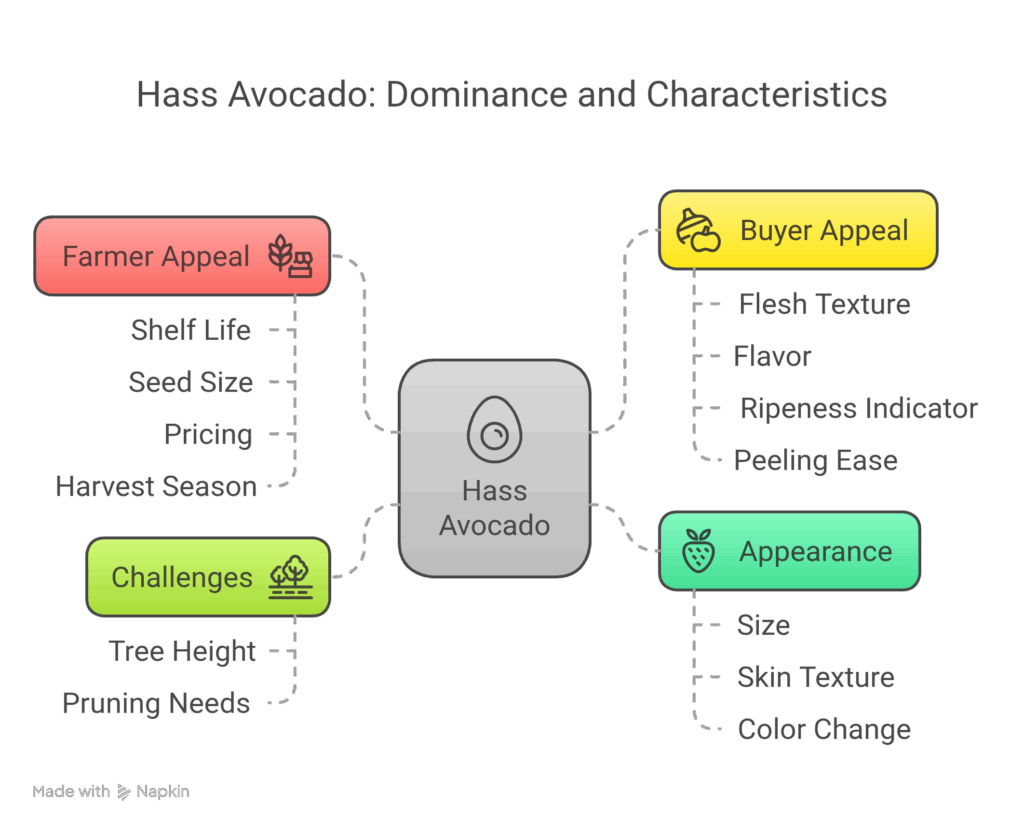
2. Fuerte: The Reliable Runner-Up
Fuerte holds down the #2 spot in Kenya’s export lineup, and for good reason:
What it looks like: Pear-shaped green fruit that stays green even when ripe (yes, that confuses beginners).
Why farmers dig it:
- Bears fruit earlier in the season than Hass (as early as February)
- Creates broader trees with excellent productivity
- Fills that market gap before Hass comes into season
What makes it sell:
- Creamy, pale green flesh that tastes exceptional
- Easy to peel once you know what you’re doing
The catch: More susceptible to diseases like Anthracnose and Scab compared to Hass. You’ll need to stay on top of your plant health game.
3. Jumbo (Kienyeji): The Local Hero
Don’t let the lack of international fame fool you – this local variety has serious street cred in Kenyan markets:
What it looks like: Big, round fruit with thick green skin (the name “Jumbo” isn’t just for show).
Why local markets can’t get enough:
- Impressive size makes it stand out at market stalls
- Creamy flesh with good flavor
- Familiarity factor with local consumers
The catch: Less popular in export markets, so plan your sales strategy accordingly.
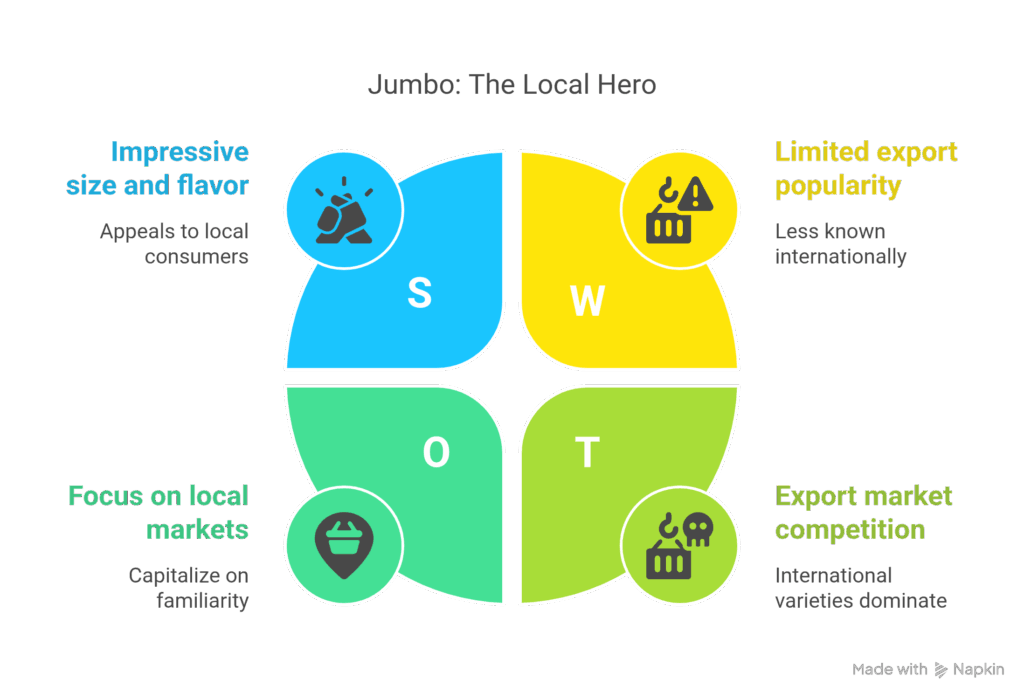
4. Pinkerton: The Dark Horse
If you’re looking for something with excellent quality but slightly under the radar, Pinkerton deserves your attention:
What it looks like: Long, pear-shaped fruit with slightly thick green skin and some pebbling.
Why it’s worth considering:
- That tiny seed means more edible flesh per fruit
- Rich, nutty flavor that rivals Hass
- Easy to peel (a small detail that makes a big difference in marketability)
The catch: Less name recognition than Hass or Fuerte, but the quality speaks for itself.
5. Reed: The Size King
When size matters, Reed delivers:
What it looks like: Round shape with thick green skin and slight pebbling.
Why it stands out:
- Produces the largest fruits of all avocado varieties
- Creamy flesh with excellent taste
- Visual impact at market stalls
The catch: The larger size means fewer fruits per tree, but each one commands attention.
6. Puebla: The Boutique Option
Less common but worth knowing about:
What it looks like: Small, compact fruit resembling Hass with thin, black smooth skin when ripe.
What makes it special:
- Velvety flesh with a distinctive nutty aroma
- Rich, buttery taste
- Different enough to stand out in specialty markets
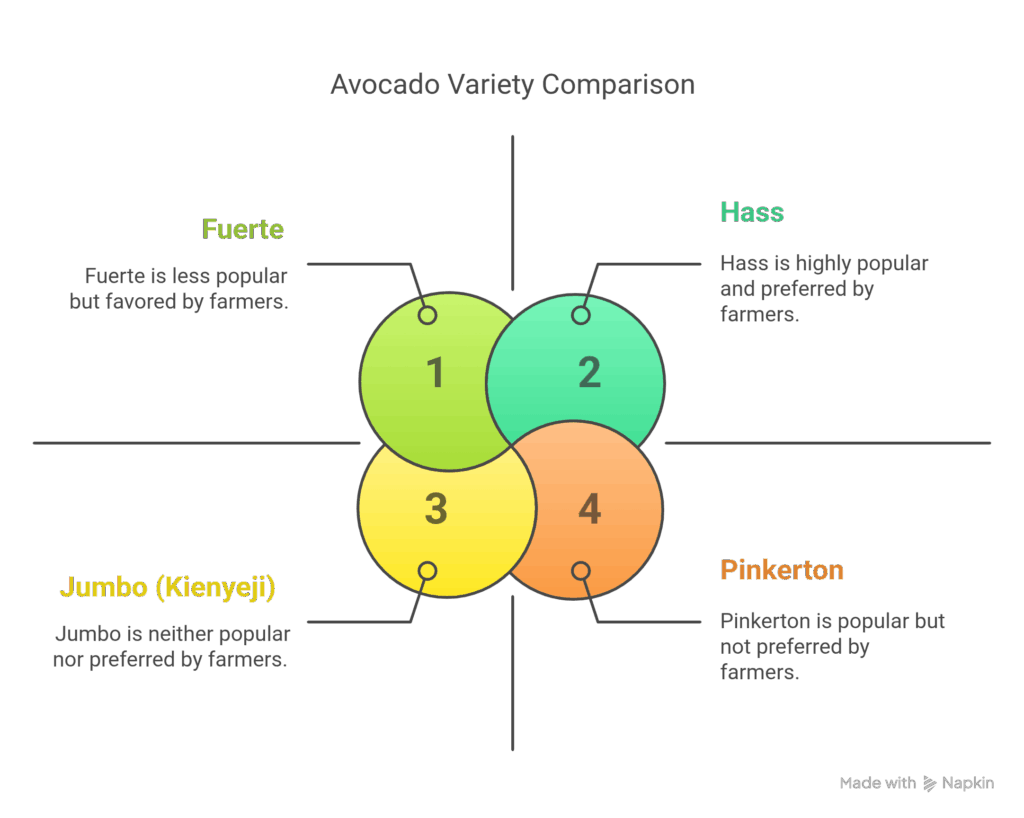
Strategic Planting: Getting Your Avocado Game Right
The A-B Pollination System: Dating Advice for Your Trees
Here’s something they don’t tell you right away – avocados have a weird dating life. As Farming in Kenya explains, they’re classified into two flowering types that affect pollination:
“A” Varieties:
- Hass
- Gwen
- Lamb
- Pinkerton
- Reed
- GEM
“B” Varieties:
- Bacon
- Ettinger
- Fuerte
- Sharwil
- Sir Prize
- Walter Hole
- Zutano
Why this matters: Planting varieties from both groups improves cross-pollination and boosts your yield. It’s like setting up your trees on blind dates – they’ll thank you with more fruit.
Location, Location, Location: Where To Plant What
Not all regions in Kenya are created equal when it comes to avocado farming. Here’s where the magic happens:
- Central Kenya: Murang’a (32% of production), Kiambu (13%), and Nyeri lead the pack
- Rift Valley: Look to Nakuru and Bomet (5%)
- Eastern Kenya: Embu and Meru are your spots
- Western Kenya: Kisii (13%) and Nyamira (5%) round out the map
According to KEPHIS, the Kenyan government has been actively promoting avocado farming, particularly Hass varieties, in counties like Nyeri to boost production and exports.
Smart Choices: Factors That Make or Break Your Avocado Business
Market Smarts: Know Who’s Buying What
Before you plant, know who’s going to buy your harvest:
Export Market:
- Hass and Fuerte dominate Kenya’s export scene
- Europe is your primary destination (Netherlands, France, and Germany love Kenyan avocados)
- These markets demand consistency, quality, and proper certification
Local Market:
- More variety tolerance
- Jumbo (Kienyeji) varieties have strong local appeal
- Less stringent on appearance, more focused on size and taste
Timing Is Everything: The Harvest Calendar
Understanding Kenya’s avocado seasons helps you plan your cash flow:
| Variety | Early Season | Peak Season | Late Season |
|---|---|---|---|
| Fuerte | February | March-April | May |
| Hass | May | June-August | September |
| Reed | June | July-August | September |
| Pinkerton | April | May-June | July |
The overall peak avocado season in Kenya runs from March to September, meaning you could strategically plant different varieties for a longer harvest window.
Disease Resistance: Prevention Beats Cure
Some varieties will give you fewer headaches than others:
More Resistant:
- Hass generally shows better resistance to common issues
More Susceptible:
- Fuerte has higher vulnerability to Anthracnose and Scab
This isn’t just about plant health – it affects your production consistency and ultimately, your wallet.
Your First Year: Getting Started Right
For beginner farmers, I recommend this starter approach:
- Start with Hass as your primary variety (about 60-70% of your trees)
- Complement with Fuerte (20-30%) for early season cash flow
- Experiment with a few trees of other varieties (10-20%) to test your market and growing conditions
This balanced portfolio gives you:
- The market reliability of Hass
- Extended harvest season with Fuerte
- Learning opportunities with other varieties without major risk
The Bottom Line: Which Variety Is Actually Best?
If you’re looking for the TL;DR version, here it is:
For export focus: Hass is your gold standard. Period. It travels well, has name recognition, and fetches premium prices.
For local markets: A mix of Hass and Jumbo/Kienyeji gives you the best of both worlds.
For maximum harvest window: Plant both Fuerte and Hass to cover February through September.
For beginners with limited space: Start with Hass – it’s the safest bet while you learn the ropes.
Remember, success in avocado farming isn’t just about picking the right variety – it’s about matching that variety to your specific growing conditions, market access, and business goals. But with Kenya’s avocado industry booming like it is, the opportunity is ripe for the picking.
What variety are you leaning toward for your farm? Drop a comment below – I’d love to know what’s going into your soil.
Ready to transform your land into a profitable avocado farm? Drop a comment with your questions and I’ll help you get started!




